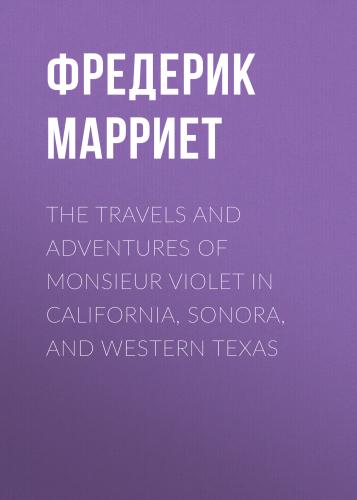10
The Comanches women very much resemble the common squaws, being short and broad in figure. This arises from the Comanches secluding the women and not permitting them air and exercise.
11
Formerly there was a considerable tribe of Indians, by the name of Texas, who have all disappeared, from continual warfare.
12
The Crows, our neighbours, who are of the Dacotah race, are also excellent horsemen, most admirably dressed and fond of show, but they cannot be compared to the Shoshones; they have not the same skill, and, moreover, they abuse and change their horses so often that the poor brutes are never accustomed to their masters.
13
The system of prairie warfare is so different from ours, that the campaign I have just related will not be easily understood by those acquainted only with European military tactics.
When a European army starts upon an expedition, it is always accompanied by waggons, carrying stores of provisions and ammunition of all kinds. There is a commissariat appointed for the purpose of feeding the troops. Among the Indians there is no such thing, and except a few pieces of dried venison, a pound weight of powder, and a corresponding quantity of lead, if he has a rifle, but if not, with his lance, bow, arrows, and tomahawk, the warrior enters the war-path. In the closer country, for water and fuel, he trusts to the streams and to the trees of the forests or mountains; when in the prairie, to the mud holes and chasms for water, and to the buffalo-dung for his fire. His rifle and arrows will always give him enough of food.
But these supplies would not, of course, be sufficient for a great number of men; ten thousand for example. A water-hole would be drained by the first two or three hundred men that might arrive, and the remainder would be obliged to go without any. Then, unless perchance they should fall upon a large herd of buffaloes, they would never be able to find the means of sustaining life. A buffalo, or three or four deer can be killed every day, by hunters out of the tract of an expedition; this supply would suffice for a small war party, but it would never do for an army.
Except in the buffalo ranges, where the Comanches, the Apaches, and the Southern Shoshones will often go by bands of thousands, the generality of the Indians enter the path in a kind of
14
The Tonquewas tribe sprang from the Comanches many years ago.
15
The word Pawnee signifies "
The Grand Pawnees, the tribe among whom Mr. Murray resided, are of Dahcotah origin, and live along the shores of the river Platte; the Pawnee Loups are of the Algonquin race, speaking quite another language, and occupying the country situated between the northern forks of the same river. Both tribes are known among the trappers to be the "Crows of the East;" that is to say, thieves and treacherous. They cut their hair short except on the scalp, as is usual among the nations which they have sprung from.
The third tribe of that name is called Pawnee Pict; these are of Comanche origin and Shoshone race, wearing their hair long, and speaking the same language as all the western great prairie tribes. They live upon the Red River, which forms the boundary betwixt North Texas and the Western American boundary, and have been visited by Mr. Catlin, who mentions them in his work. The Picts are constantly at war with the two other tribes of Pawnees; and though their villages are nearly one thousand miles distant from those of their enemy, their war-parties are continually scouring the country of the "Exiles of the East"–"
16
The Crows are gallant horsemen; but although they have assumed the manners and customs of the Shoshones, they are of the Dahcotah breed. There is a great difference between the Shoshone tribes and the Crows. The latter want that spirit of chivalry so remarkable among the Comanches, the Arrapahoes, and the Shoshones–that nobility of feeling which scorns to take an enemy at a disadvantage, I should say that the Shoshone tribes are the lions and the Crows the tigers of these deserts.
